Creeping Charlie, also known as ground-ivy, is one of the most common and pervasive lawn weeds. It can be a real nuisance for homeowners who are trying to maintain a healthy and lush lawn. Unfortunately, it's often difficult to identify creeping Charlie until it’s too late. By that time, the weed has spread in an uncontrolled fashion throughout your yard.
At Simple Lawns, we understand how frustrating this can be, which is why we want to help you learn all about creeping Charlie so you can protect your lawn from unwanted growth and keep your grass looking its best!
Identifying Creeping Charlie

Identifying creeping Charlie can be tricky, but it is essential for controlling this weed in your lawn. There are a few key characteristics that will help you identify ground-ivy and distinguish it from other weeds. Knowing these traits will make it easier to spot the weed before it takes over your yard.
The most obvious characteristic of creeping Charlie is its heart-shaped, bright green leaves that have scalloped edges and grow in an opposite pattern on the stem. They often have a glossy texture and may even appear slightly fuzzy or hairy due to tiny trichomes found on their surface. The stems of the plant are square-shaped with nodes running along them, making them easy to recognize when compared to other types of weeds or grasses in your lawn. Additionally, creeping Charlie produces small purple flowers that bloom from April through September, depending on where you live. These flowers produce seeds that can spread quickly throughout your lawn if not taken care of properly.
Key Characteristics:
-Faint purple, blue, or white flowers
-Scalloped, heart-shaped leaves
-Soft hairs covering the leaves
-Low, prostrate growth
-Square stems
-Rooting at the nodes
Does Creeping Charlie Kill Grass?
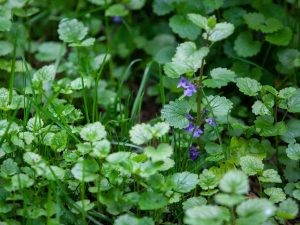
Like almost every lawn weed, creeping Charlie can destroy an entire lawn if it is not dealt with properly. Ground-ivy spreads rhizomes underneath the soil surface, which invade and overtake the healthy roots of your grass and garden plants. Your lawn needs strong, undisturbed roots in order for your grass to grow as tall and lush as possible, and that can not happen if weed roots are disrupting that growth.
Aside from what creeping Charlie does to plants underneath the soil, the manner in which it grows above the soil is also a problem for your yard. As the name suggests, creeping Charlie grows low and gradually in a "creeping" manner. This low, vine-type growth leads to tangled mats of vegetation that block sunlight and other resources from reaching your grass. When a creeping Charlie invasion is taking over your lawn, it becomes much more difficult to water your lawn, fertilize the soil, mow the grass, or take care of any other basic lawn maintenance. Both above and below the soil in your yard, creeping Charlie will ruin all the hard work you put into your yard every season.
When & Where Does Creeping Charlie Grow?

Creeping Charlie is a perennial lawn weed that can be problematic for homeowners due to its aggressive growth and spread. In order to effectively control the weed, it's important to understand its life cycle so you know when and where it will grow.
When Does It Grow?
The life cycle of creeping Charlie begins in early spring with the germination of seeds that have been dormant over the winter months. Ideal temperatures for the growth of creeping Charlie are between 65 and 80, which is usually between May and August in the Portland area. The seedlings then emerge from the soil and begin growing rapidly as they compete for resources such as light, water, nutrients, and space with other plants in your lawn or garden. As temperatures rise throughout spring and summer, the plant continues to spread both above and below ground through rhizomes that send out roots at each node along their stems. By late summer or fall, creeping Charlie has grown into dense mats that are difficult to remove.
Where Does It Grow?
Creeping Charlie loves damp soil, particularly in wooded areas. It prefers some shade, as too much direct sunlight and heat can cause the weed to go into dormancy. However, it can be found almost anywhere in the Portland area as long as there is some shade and moisture, including usually sunny areas of your lawn. Struggling lawns are the first choice of ground-ivy because of the way in which it grows; if your grass is struggling to emerge and become lush, ground-ivy/creeping Charlie will have an easier time spreading its low-growing stems. It's common to find creeping Charlie invading gardens, lawns, paths, driveways, and any other areas of your yard that are not receiving regular sunlight or care.
How Does Creeping Charlie Spread?

Creeping Charlie is one of the most unique and aggressively spreading lawn weeds you will encounter. As mentioned earlier in the article, this weed spreads by both rhizomes and stolons that take root at every single node that is produced, which is one of the main reasons an invasion is so hard to control once it has begun. In addition to the creeping spread of this weed's roots and stems, it also produces seeds that are easily dispersed upon contact. The funnel-shaped flowers get insect-pollinated and set seed around mid-June. However, seeds of ground-ivy are not usually viable in the soil for longer than 1 year, which is why vegetative reproduction is the primary way this weed spreads.
How To Prevent & Control Creeping Charlie

As is the case with all low-growing weeds, leaving your grass a bit taller than normal (around 4 inches) can help prevent creeping Charlie by blocking out sunlight and resources. Fertilizing and seeding are also fantastic ways to prevent a creeping Charlie invasion because this weed spreads most easily in lawns or areas without much groundcover. For the removal of existing creeping Charlie, chemical herbicide is the best choice, but some removal techniques can be effective. Call Simple Lawns if you want the most efficient weed removal services in the Pacific Northwest, and follow the steps below to properly remove creeping Charlie from your yard.
Step 1: Cut leaves and stems. The less vegetation present, the easier it will be to remove creeping Charlie.
Step 2: Soak the soil. Making the soil affected by ground-ivy wet makes the roots easier to extract.
Step 3: Dig in the soil. After soaking, loosening the soil with gardening tools creates less of a barrier between the roots.
Step 4: Pull firmly. Grab as low on the stem as possible, and firmly pull up every bit of the root fragments you can.
Step 5: Apply weed killers. Spraying herbicides like 2, 4-D after removing as much of the weeds as possible is the final and most important step, as this will help ensure that any fragments left in the soil can not regenerate.
Subscribe to Simple Lawns's Blog



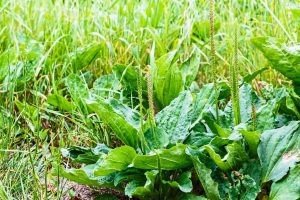
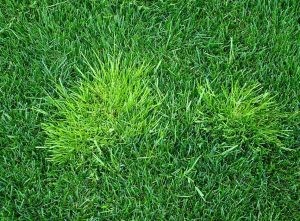
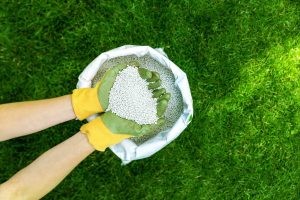
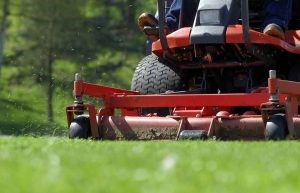


Comments